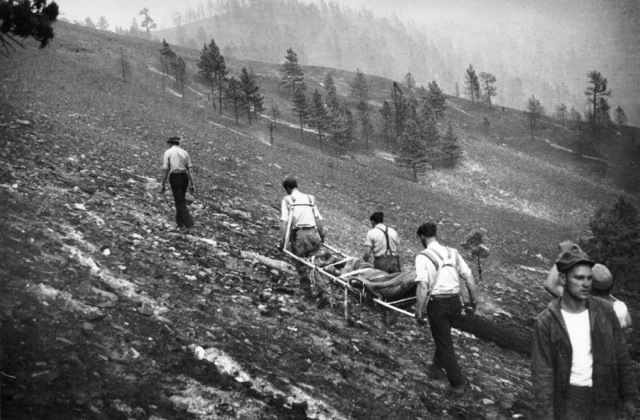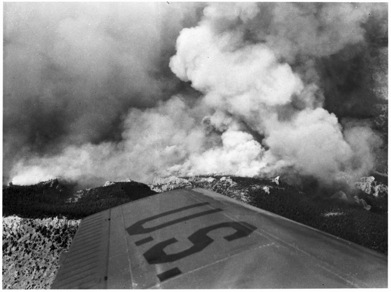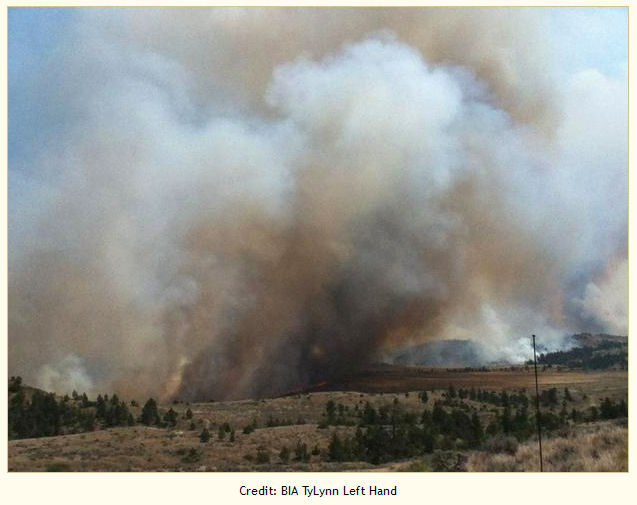The U.S. Forest Service has requested additional MAFFS-equipped C-130 airtankers, and two aircraft from the 302nd Airlift Wing at Peterson Air Force Base in Colorado will soon be on duty. MAFFS tankers have dropped nearly 889,000 gallons of retardant on fires in eight states since they were activated on June 25.
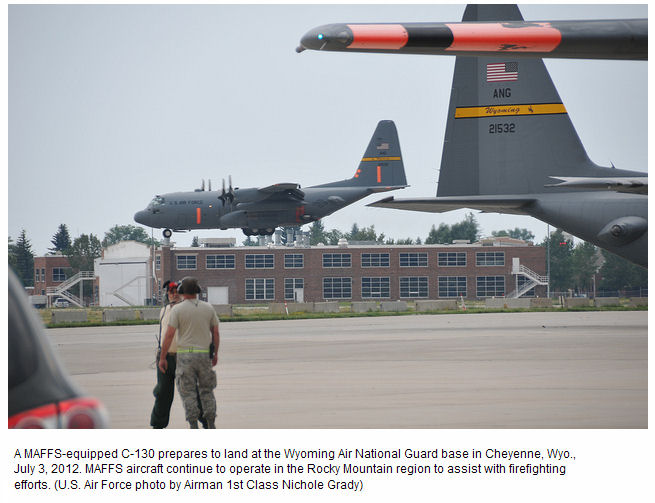 Another USFS request recently prompted the Joint Training and Experimentation Center (JTEC) in Wyoming to prepare an unmanned aerial vehicle for recon missions on the Sawmill Canyon Fire. JTEC, which tests and develops unmanned vehicles, is a partner with the Wyoming National Guard, the University of Wyoming, and the Department of Defense’s Joint Ground Robotics Enterprise.
Another USFS request recently prompted the Joint Training and Experimentation Center (JTEC) in Wyoming to prepare an unmanned aerial vehicle for recon missions on the Sawmill Canyon Fire. JTEC, which tests and develops unmanned vehicles, is a partner with the Wyoming National Guard, the University of Wyoming, and the Department of Defense’s Joint Ground Robotics Enterprise.
John Offe, senior electronic technician for JTEC, said the request came from the fire’s incident commander. JTEC’s capabilities include aerial reconnaissance, forward-looking infrared cameras, video, still photos, and night flying.
Offe said the JTEC team began preparing the T-16 aircraft for use on the fire, but it was contained before the JTEC aircraft was launched. Limiting conditions that affect the aircraft’s use include a requirement for restricted airspace and maintaining operations inside of their Department of Defense contracts.
“It’s not a service contract,” said Offe. “We don’t have a contract in place where we can go out and do this kind of work for them. We would love to. That’s our ultimate goal, which is to provide a system like this to somebody, be it game and fish, fire, homeland security, whoever.”
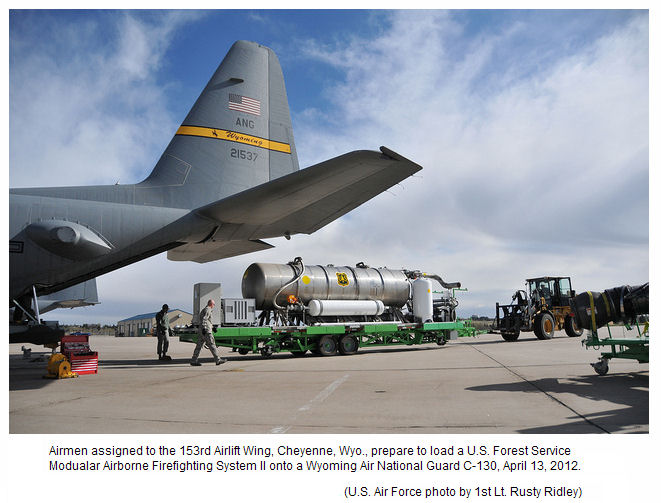 The 302nd Airlift Wing in Colorado Springs, Colo., an Air Force Reserve unit, and three Air Guard units – the145th AW in Charlotte, N.C.; the 146th AW in Channel Islands, Calif., and the 153rd AW in Cheyenne, Wyo. – each have two MAFFS-equipped C-130s able to respond to wildfires throughout the U.S.
The 302nd Airlift Wing in Colorado Springs, Colo., an Air Force Reserve unit, and three Air Guard units – the145th AW in Charlotte, N.C.; the 146th AW in Channel Islands, Calif., and the 153rd AW in Cheyenne, Wyo. – each have two MAFFS-equipped C-130s able to respond to wildfires throughout the U.S.
More information on the 302nd Airlift is available at www.302aw.afrc.af.mil/

